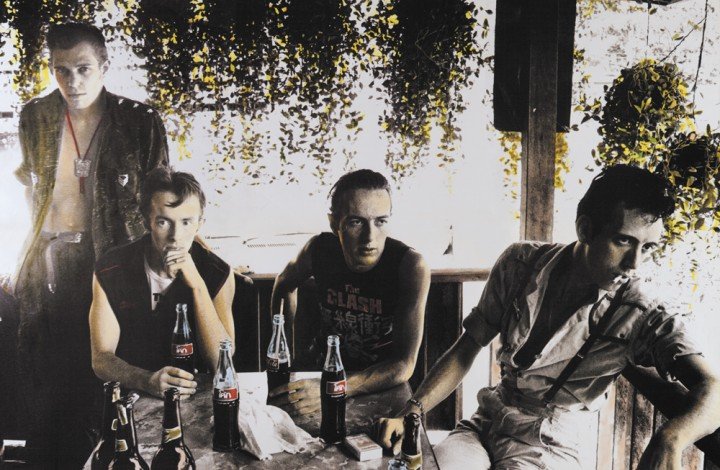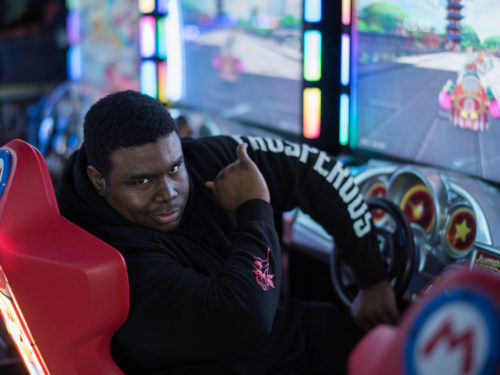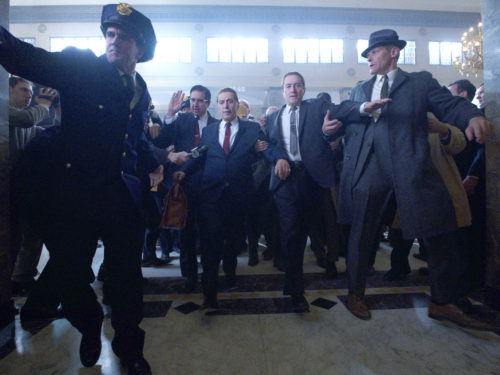With Combat Rock celebrating its 40th anniversary, Breanna McCann looks back on Mick Jones’ boundary-pushing alternate mix of the record
“Really, to see where you’ve come from, you have to go someplace else. Otherwise you wouldn’t understand that the world didn’t finish at the end of your street.” In two sentences, Mick Jones captured the philosophy that has made him one of rock ’n’ roll’s most restless and relentless innovators. From his early days as the lead guitarist and a principal songwriter in The Clash, to founding the experimental fusion group Big Audio Dynamite, and now staying busy with a host of projects, Jones’ path has never been a predictable one. Instead, even with each bend in the road, Jones stayed dedicated to pushing himself and his music towards untraversed horizons.
As with many artists typified by such stylistic boundary-pushing, it can be hard to grasp just how radical their vision was without some standard to compare. In the case of Mick Jones, this opportunity exists in the form of Rat Patrol From Fort Bragg, Jones’s extended mix of what would go on to become The Clash’s 1982 album Combat Rock. If a single piece could come close to fully encapsulating the limit-testing ambition that has carried Jones throughout his career, it would likely be the notorious rejected mix that has survived as a bootleg.
In 1980, The Clash released the mammoth triple-LP Sandinista!, their most experimental album, which says a considerable amount given the rampant genre-busting of their prior effort, London Calling (1979). Across its six sides, Sandinista! explores almost every genre imaginable, taking the reggae, rockabilly, and jazz experiments of London Calling a step further by incorporating funk, gospel, dub, calypso, and rap influences. To follow an album of that magnitude with that level of imagination would be difficult regardless, and The Clash found themselves at a crossroads as personal dramas and internal strife began to rear their heads — would they pursue a more commercial follow up, or continue on the course of experimentation they had set for themselves? Rat Patrol From Fort Bragg and the album it would become, Combat Rock as edited by Glyn Johns, show what lay at the end of each path.
Combat Rock captures a tumultuous moment in the band’s history and would be the penultimate Clash album. It’s the last to feature the core four members of Jones, singer/guitarist Joe Strummer, bassist Paul Simonon, and drummer Topper Headon. Its production would see the after-effects of the arduous recording of Sandinista! compounded with external pressure to make a more commercial follow-up, as well as the sacking of Headon as his drug problems grew. The week of Combat Rock’s release would see the dismissal of Mick Jones from the band. And yet the album would become The Clash’s best-selling record and featured two of their biggest hits, “Rock the Casbah” and “Should I Stay or Should I Go.” But before the surprise success, and in the thick of the turmoil, Mick Jones made his mix of the album under Combat Rock’s original working title, Rat Patrol From Fort Bragg, which stands at nearly double the length of the final record.
Rat Patrol From Fort Bragg is currently available in full on YouTube:
Jones was left largely to his own devices for a time, giving him the opportunity to continue his genre- and influence-blending experiments from Sandinista! As Mat Snow writes in MOJO Magazine’s 2021 Clash special, “because they seldom coincided in the studio, Mick and Joe were working without each other’s support. For Mick, fascinated by studio technology and the freewheeling mix-and-match, eclectic philosophy of New York’s hip hop and dance scenes, this was less a problem than the pressure he felt under to deliver something more obviously rock-friendly.” Jones would deliver that, too, in the form of “Should I Stay Or Should I Go,” but Rat Patrol From Fort Bragg would prove to be anything but rock-friendly.
Among its 78 minutes [Author’s note: Various mixes and reported tracklists of Fort Bragg exist. This article is referencing the version available on YouTube that coincides with the tracklist on Discogs.], Rat Patrol From Fort Bragg features a mix of every song chosen for Combat Rock plus five unreleased tracks. The songs that did not make the final album are perhaps the most experimental and thus the most representative of Jones’ vision at the time. Jones’ interest in New York dance culture is most apparent in “The Fulham Connection (The Beautiful People Are Ugly Too)” and “Kill Time (Idle in Kangaroo Court W1),” two synth-heavy tracks that lead off the album. The latter blends splashes of reggae into the mix that are not at all out of place for The Clash. But these songs rely on electronic elements. Gone are searing guitar licks from Jones or pulsing bass lines from Simonon. Headon’s drumming remains, and Strummer’s vocals are as growling as ever, but the experimental elements of Sandinista! are pushed to the forefront, bumping them up to another level. “First Night Back in London” and “Cool Confusion” follow a similar pattern. Leaning heavily into reggae and dub styles, they allow for some interesting accentuation of Strummer’s vocals that was not present in some of the earlier, guitar-driven work. The former has a typical Clash sound, with a throbbing bassline from Simonon, driving drums from Headon, and guitar flourishes from Jones. But for every familiar moment, they incorporate surprising new sounds, even for a group built on sonic experimentation. Perhaps the most unexpected moment in the unreleased tracks is “Walk Evil Talk,” an instrumental piece featuring only a haunting piano and soft drumming from Headon that occasionally explodes. It is perhaps the most “traditional” of the songs that appear on this mix, which is startling in and of itself for a jazz-like composition in the midst of tracks steeped in punk rock and dance synths.
The other main attraction of Rat Patrol is hearing Jones’ mixes of songs that made it onto Combat Rock, with the album’s two hits being of particular interest. “Rock the Casbah” was composed almost entirely by Topper Headon, who recorded the drum, piano, and bass parts by himself in the studio. When Strummer, Simonon, and Jones heard what he had taped, they viewed it as a nearly finished track, with only the addition of lyrics and minimal overdubs needed later. As it appears on Jones’ mix, “Casbah” starts with a bongo solo, unfortunately cut from the later song but that appears more prominently in the B-side to the single version, “Mustapha Dance.” Jones experiments more with sound effects on his mix (like a car horn after “the Sheik drove his Cadillac” and crowd noises after “ban that boogie sound”), but the song mostly remains intact from his mix of Headon’s tracks to the Combat Rock version. “Should I Stay Or Should I Go” is largely similar, but Jones’ version places the guitar so high in the mix that the vocals almost feel like they are backing for the riff. Jones doubles his vocals, and includes more backing shouts throughout the verses, rather than exclusively during the chorus, and realigns the rhythm in the vocals. A blaring saxophone is added during the bridge that brings an extra layer to the rocker, especially as it carries on through the rest of the song.
Among the other most notable changes are Jones’ entirely instrumental version of “Overpowered by Funk;” Vocals from Strummer and spoken word from graffiti artist Futura appear on the final Combat Rock mix. “Atom Tan” features a different outro with additional vocals from Jones in his original mix, and “Inoculated City” is cut by half on the final album. The Rat Patrol mix of the latter features some great strings and more guitar in an extended instrumental section.
Interestingly enough, for all the tracks that underwent a significant change for the final album, a few are almost untouched from Jones’s mix to the final cut of the album. “Car Jamming” and “Death Is A Star” are virtually identical to the Rat Patrol iterations. Many of the remaining tracks are also mainly left alone, but with noticeable and significant trimming. “Know Your Rights” is also about two minutes shorter in the final cut and dials back the heavy tremolo and echo effects Jones applies to the guitars. The original eight-minute cut of “Straight to Hell” is the stuff of legend and one of the few tracks that suffers from being trimmed to fit the final album. Some of Strummer’s best vocal moments, taking place around the five-minute mark, were cut. The improvisational feel of the excised verses creates an expansiveness within the song allowing more room to breathe.
Related: The Unknown Immortal: ‘Walker’ And The Trials Of St. Joe Strummer
Rat Patrol feels like a far more natural progression for The Clash from Sandinista! than the final cut of Combat Rock. The Clash were always looking to incorporate new styles and techniques into their music. Their most critically acclaimed album, London Calling, is a testament to this, blending every genre imaginable within its 19 tracks. They took this a step further with Sandinista!, which eschewed much of the traditional pop song structures of London Calling for more extended, free-form grooves. While Rat Patrol reins these more indulgent tendencies back a bit, Jones employs these styles and techniques even more effectively than in Sandinista!, a characteristic that makes his mix of the album particularly compelling.
The Clash may have done well to include some of these original mixes on Combat Rock, especially the eight-minute cut of “Straight to Hell.” Combat Rock is often overwhelming in its forward momentum. The final version feels like they are restraining themselves; they’re making a conscious effort to be more approachable than Sandinista! However, the inclusion of some of Jones’ extended mixes would’ve helped Combat Rock’s pacing, and may have been more true to form for a band that built its most enduring legacies on following their inspirations to the extreme. Perhaps, though, that is merely musing for a bolder and more definitive final statement from the original Clash lineup. Regardless, it is truly fortunate that Rat Patrol still exists as an alternate vision of the final months of one of the most essential bands of all time. Perhaps what is most impressive about the juxtaposition of the two is the realization that the songs are equally as compelling in the longer, expansive versions on Jones’s mix as they are in the tightened form that made the final cut. This in and of itself is an incredible testament to the versatility of The Clash.
As Jones honed his skills behind the mixing board, it began to shape his entire philosophy on music. He became less concerned with making commercial, radio-friendly hits, though he certainly succeeded at that even within the confines of what would become Combat Rock. He saw a bigger picture of musical possibility, and one he chased — and continues to chase — relentlessly. Rat Patrol From Fort Bragg captures Jones at this moment of shift where he starts reaching for horizons beyond The Clash. It is a path that would lead him to form Big Audio Dynamite and guide their ever-surprising blend of sonic experimentation and ceaseless genre-hopping. Jones has continued to keep busy with numerous collaborations and projects. Perhaps most faithful to his experimental nature, Jones featured on the title track of the 2010 album Plastic Beach and the following tour (both alongside former Clash bandmate Paul Simonon) for Gorillaz, a virtual band masterminded by Damon Albarn, the Blur frontman whose prolific nature makes him very much an heir apparent to Jones himself.
Following the band’s final dissolution after 1986’s Cut the Crap (the final Clash album only in name, not in spirit), Strummer approached Jones to reunite. Jones, who was busy with Big Audio Dynamite, turned down the offer. The band reconciled relatively soon after the dissolution and remained on good terms, but they would never return to The Clash onstage as that full, classic lineup. Rat Patrol From Fort Bragg captures Jones at the beginning of striking out to forge his own destiny, something all of the members of The Clash were forced to do even after leaving such an indelible and pervasive mark on the society in which they created. The hallmark of Jones’ path was constantly trying to find the next big thing to explore, whether that was diving into synth-heavy dance music or lending his guitar to a virtual band. He is in that rare breed of artist who is so attuned to his own sense of vision to follow it tirelessly and to chase it down whatever path may appear. Few pieces of Jones’s musical legacy encapsulate this quite as potently as Rat Patrol From Fort Bragg.
The recently announced Combat Rock / The People’s Hall special edition set marks the 40th anniversary of Combat Rock and includes bonus tracks taken from rehearsals and recordings at The People’s Hall in London in 1981, following their New York residency. These recordings would go on to become Combat Rock, and three songs cut from Rat Patrol From Fort Bragg appear on the tracklist of this bonus material. It will be interesting to hear if these are the Rat Patrol versions of the tracks, and while it is exciting to have some official release parts of Jones’s mix, it begs the question of whether there could or would ever be an official release of the full Rat Patrol From Fort Bragg. It is certainly deserving of remaster and release. What makes Rat Patrol feel so wholly different, and consequently, worthy of consideration, is that it manages to simultaneously show the totally different place Jones was in at the time sonically, while also revealing just how significantly he influenced and shaped the sound of The Clash’s final classic record.
Stay up to date with all things Split Tooth Media and follow Breanna on Twitter
(Split Tooth may earn a commission from purchases made through affiliate links on our site.)




